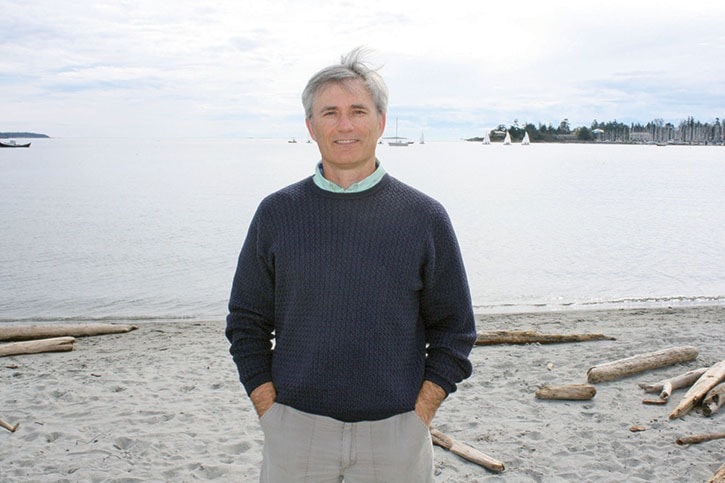Travis Paterson
Black Press
They call it “The Blob,” and it’s threatening to change marine habitats off the coast of B.C. and Alaska.
The Blob is an anomaly of nutrient-poor, warm water, the likes of which seasoned oceanographers haven’t seen before, says Tom Okey, a Victoria-based marine ecologist and adjunct environmental studies professor at the University of Victoria.
It could further affect the pole-ward migration of marine life already occurring along the Pacific coast.
“West Coast fishermen are chasing tuna to Alaska,” Okey said. “Fishermen recently caught a skipjack tuna – a tropical fish – in the mouth of the Copper River, one of Alaska’s most iconic salmon rivers.”
The Blob began appearing at the end of 2013, and spread to an area covering 1.5-million square kilometres across the Gulf of Alaska.
It arrived in the nearshore waters of Vancouver Island at the end of 2014, “where the waters remain much warmer than usual,” Okey said.
Okey has authored and co-authored papers in several peer-reviewed journals summarizing the impacts of climate change on Canada’s Pacific region, calculating the vulnerability of Pacific Northeast waters to the effects of climate change.
He’s quick to point out that while the ocean is highly variable, there are too many indicators suggesting the marine ecosystem is undergoing significant change, and it’s not for the better.
A naturally occurring cool period in the coastal Pacific Ocean from 2006 to 2013, known to researchers as a cold regime, is believed to have masked the underlying signals of longer-term oceanic changes. That cool regime delayed more conspicuous changes in the ocean as well as our own socio-economic changes, Okey says.
Frank Whitney, with the Institute of Ocean Sciences in North Saanich, said winter winds blowing across the Pacific are possibly being impacted by decreased sea ice cover, which in turn could be driving up the ocean temperature.
“The warming of the Arctic and decrease in the cover of Arctic summer sea ice may have caused weakened westerly and stronger southerly winds in the North Pacific starting in the fall of 2013. As a result, warmer southern waters were pushed northward,” Whitney said.
Researchers say the Blob is responsible for low nutrients, low biological productivity and changes in currents, salinity, stratification, dissolved oxygen and acidity. Okey said it has also been linked to changes in the distributions, productivity and abundances of marine species including plankton, fishes, mammals and birds.
Okey and colleagues, including Dr. William Cheung of the UBC Fisheries Centre, estimated that some marine fishes along the coast are shifting northward at an average of 30 kilometres per decade, though other research suggests an even faster rate. But species shift at different rates, Okey said.
“What you get is re-shuffling and mismatches of co-evolved species,” he said. “When predators are showing up to feed, the plankton or other prey are sometimes not there at the same time that they used to be.”
Okey said there’s a pretty long list of indicators that suggest species are reshuffling fast.
“We have some examples of past events with similar shifts, such as previous El Ninos including the early 1990s and 2005, when Pacific mackerel arrived in B.C. in huge numbers. As voracious predators, they ate much juvenile salmon and their prey. We need to prevent species extinction and we need to find approaches to help maintain the functional health of the system with reshuffled species, so we can help the species adapt to the environment, if we want to keep them there for a least a little while.”
One type of approach that Okay and colleagues are focusing on is spatial vulnerability assessment, the search for ‘climate refugia (areas of slower change), which can be protected or otherwise managed.
DID YOU KNOW?
Predicting climate change impacts on Pacific salmon is complicated, but salmon are cold-water species in both marine and freshwater habitats, and are affected by changes in nearshore habitat and offshore food resources. It doesn’t look good for Pacific salmon species in the current ocean climate, Okey said. Chinook salmon may be particularly sensitive. As the preferred prey of the threatened resident Orca population in Canada’s Pacific, Orcas may be particularly affected by this warm anomaly thanks to decreasing food supply.
